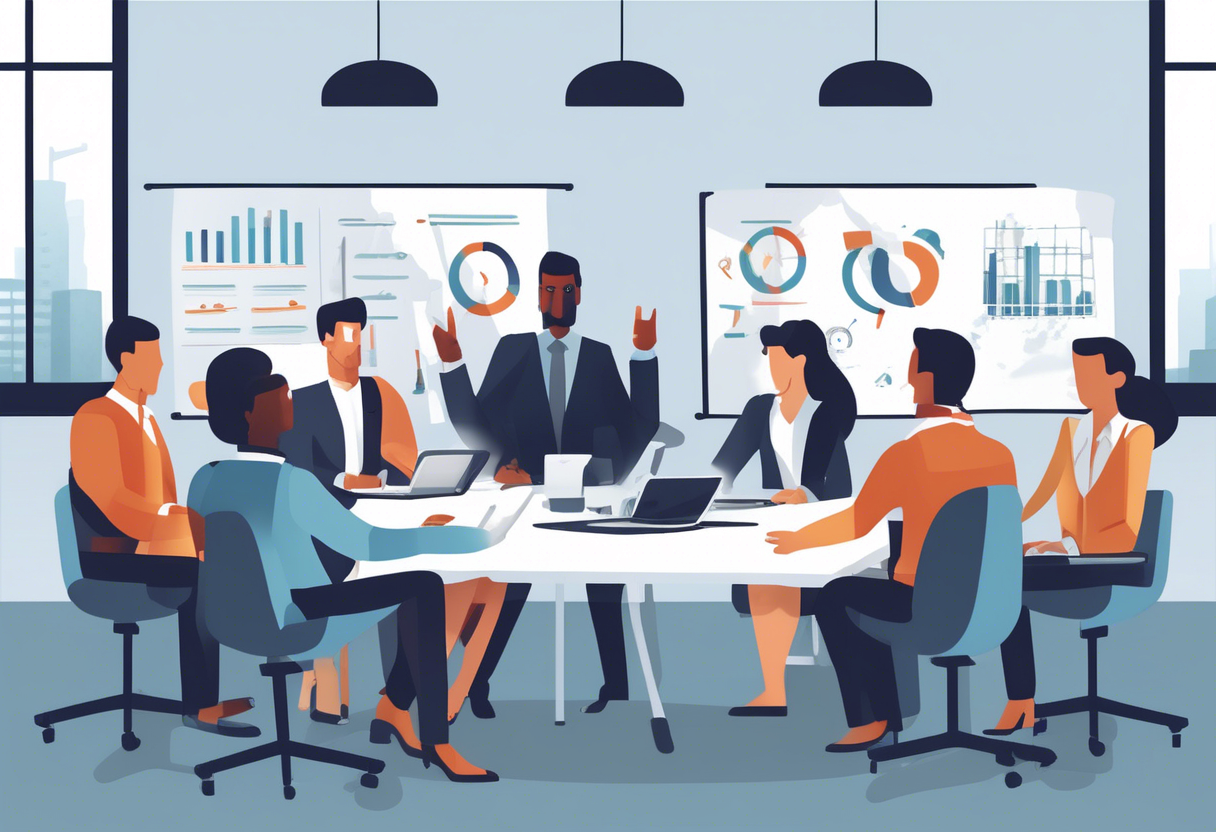
Employee growth isn't just a trendy term; it's what keeps a workplace lively, creative, and ahead of the game. Did you know companies with solid employee development programs make 24% more profit than those without? Yep, it's a fact. With change being the only constant now, focusing on employee growth is more important than ever. So, how can we move past the usual promotions and pay raises? In this article, we’ll look into personalized growth paths, the impact of mentorship and coaching, and the role of leadership and career development opportunities. We’ll also talk about the need for ongoing and adaptable learning environments and explore other growth options beyond the typical success ladder. Whether you're in HR, a manager, or an employee aiming to move up, this guide will help you tap into your workforce's full potential.
Personalized Growth Paths for Employee Development
Aligning Employee Goals with Company Objectives
To help employees grow, it's key to match what they want with what the company needs. When personal goals align with company goals, it boosts motivation and aids company success.
-
Self-Reflection: Encourage employees to contemplate their career dreams, strengths, and areas for improvement. Regular one-on-one meetings with managers facilitate this reflection.
-
Development Plans: Use insights from these reflections to craft personalized development plans that tie personal ambitions to business goals. Individual Development Plans (IDPs) act as action plans, linking career goals with the skills and training needed for company growth.

For instance, a company might ask employees to conduct a self-assessment to pinpoint their strengths and career goals, and then collaborate with managers to create IDPs that align these goals with the company’s overarching objectives.
Developing Individual Growth Plans for Employees
IDPs are collaboratively created by employees and managers to set clear career goals and identify necessary skills or training. These plans bridge personal aspirations with company objectives.
-
Regular Check-ins: Sync IDPs with performance reviews to ensure ongoing growth. Tools like Develop by Culture Amp make these plans actionable and manageable with clear milestones.
-
HR Support: HR departments often provide IDP templates and facilitate quarterly meetings for employees and managers to review progress and update goals. This keeps development plans relevant and adaptable to both personal and company changes.
Leveraging HR Analytics for Employee Growth
HR analytics offers data-driven insights into workforce trends and individual performance, personalizing employee growth.
-
Data Utilization: By analyzing data from performance and learning platforms, HR can identify skill gaps and strengths, tailoring growth opportunities like mentorship, training, and projects to individual needs.
-
Progress Tracking: Analytics can track progress and help adjust development plans to remain aligned with personal and company needs. HR uses analytics dashboards to monitor skill development trends and suggest learning paths and mentorships based on employee data.
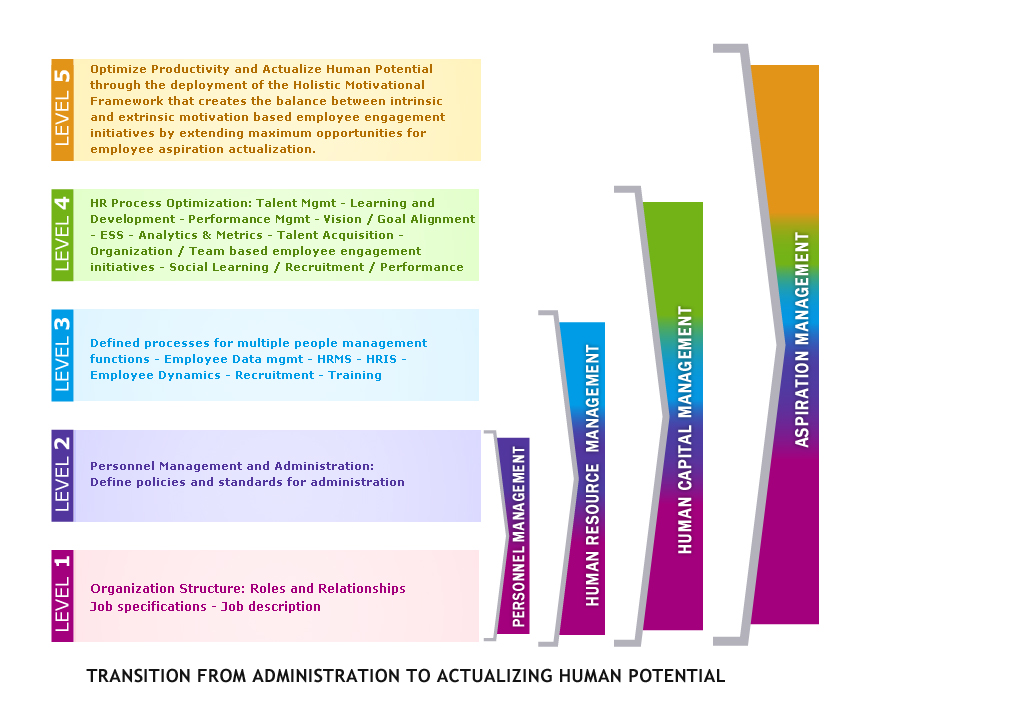
This approach ensures training is both relevant and effective, leading to a more skilled and satisfied workforce. By leveraging HR analytics, companies can create a personalized growth path for each employee, enhancing productivity, retention, and business impact.
Mentorship and Coaching for Employee Growth
Implementing Effective Mentorship Programs for Employee Growth
Formal mentorship programs are pivotal in fostering employee growth by offering structured support and skill-building opportunities. These initiatives connect junior staff with seasoned professionals, facilitating the flow of knowledge and encouraging internal mobility. For these programs to be effective, they should not be one-off events. Instead, they need to be ongoing, integrating learning and teamwork into the fabric of work life. This approach enables companies to identify rising stars, build robust teams, and maintain a fresh talent pool.
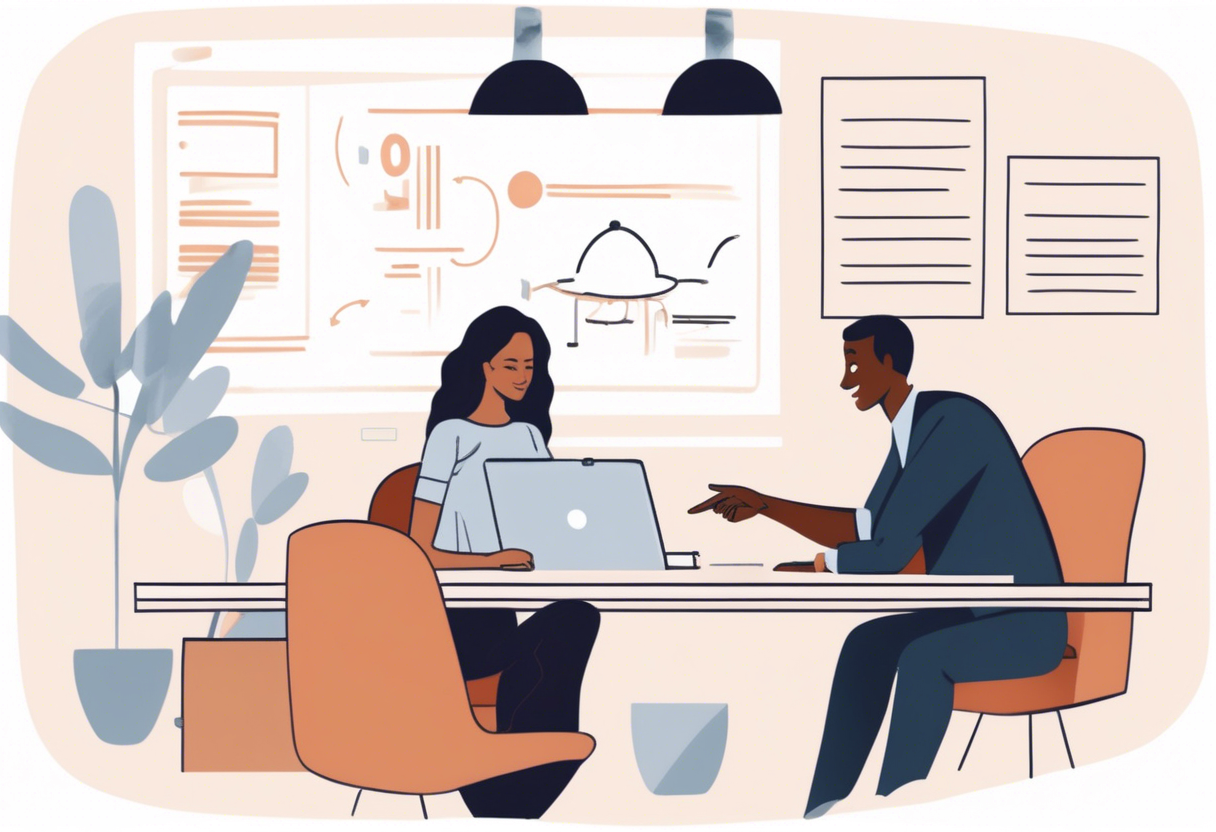
Consider First Horizon Bank as an example. They implemented a mentorship program targeting high-potential employees, which enhanced leadership and communication skills. This initiative resulted in increased visibility for promotions and career advancement opportunities. By cultivating a culture that values mentorship, companies can inspire participants and underscore its significance within the organization.
Enhancing Employee Growth through Coaching and Knowledge Transfer
Coaching and mentoring provide employees with the personal support necessary to develop their skills and overcome challenges. Mentors act as guides, sharing their expertise and advice to help mentees acquire new skills and acclimate to their roles more swiftly. This fosters a culture of continuous learning, where knowledge is regularly exchanged, and collaboration enhances the company’s capabilities.
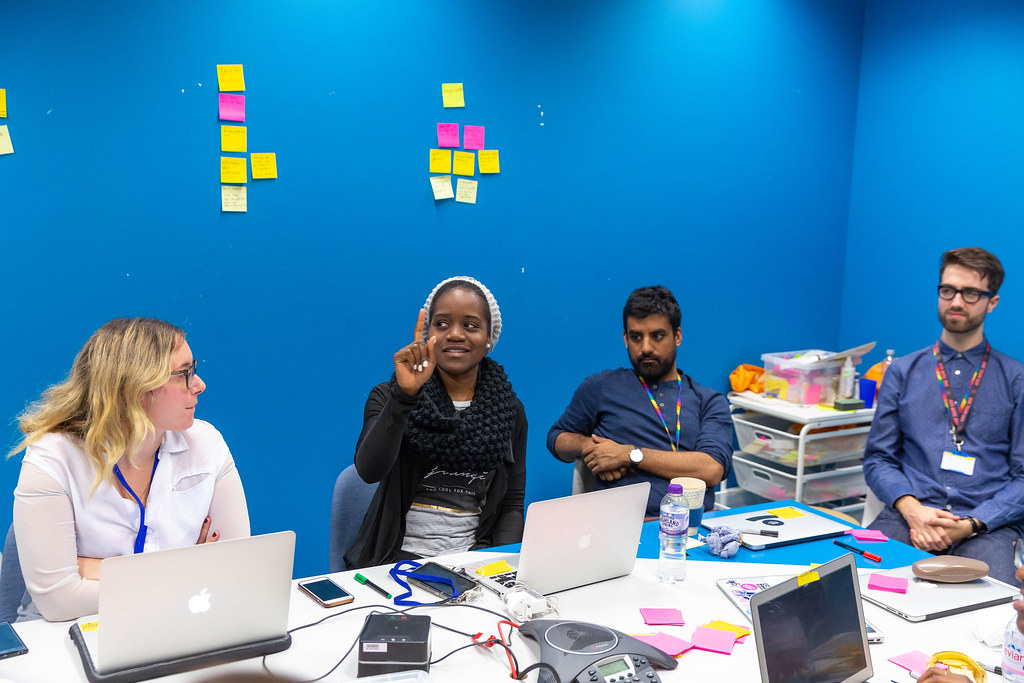
These relationships are mutually beneficial. Mentors refine their leadership and coaching skills, while mentees gain expertise and advance in their careers. Research indicates that mentoring can increase the likelihood of promotions by five times, demonstrating the effectiveness of knowledge sharing for career growth. By integrating coaching into the company culture, businesses ensure that knowledge is disseminated seamlessly across teams, enhancing performance and inspiring innovation.
Evaluating the Impact of Mentorship on Employee Growth
Assessing the effectiveness of mentorship and coaching is crucial. These programs enhance employee engagement by fostering a sense of belonging and growth, which contributes to lower turnover rates. Mentored employees acquire skills more rapidly, perform better, and are more productive, all of which drive the company’s success.
One method to track progress is by setting SMART goals with mentors. This approach ensures focused efforts and provides clear outcomes for mentorship programs. Moreover, the benefits of coaching and mentoring extend beyond individuals, aiding entire teams and the business in thriving through innovation and growth. By employing metrics such as promotion rates, retention, and engagement surveys, companies can gauge the impact of mentorship. For instance, employees with mentors are five times more likely to be promoted, illustrating tangible career progress. By regularly evaluating and refining these programs, companies can cultivate a culture of continuous learning and development that propels both employee and organizational success.
Leadership and Career Progression Opportunities
Preparing Employees for Future Leadership Roles
To prepare employees for future roles, companies should prioritize solid leadership development programs. These programs enable employees to evaluate and enhance their skills through:
- Mentorship
- Training exercises
- Self-assessment
Participating in these programs helps employees navigate career growth and step into leadership roles effectively. Offering leadership training is crucial as it prepares employees for management and supervisory positions, aiding their career progression.
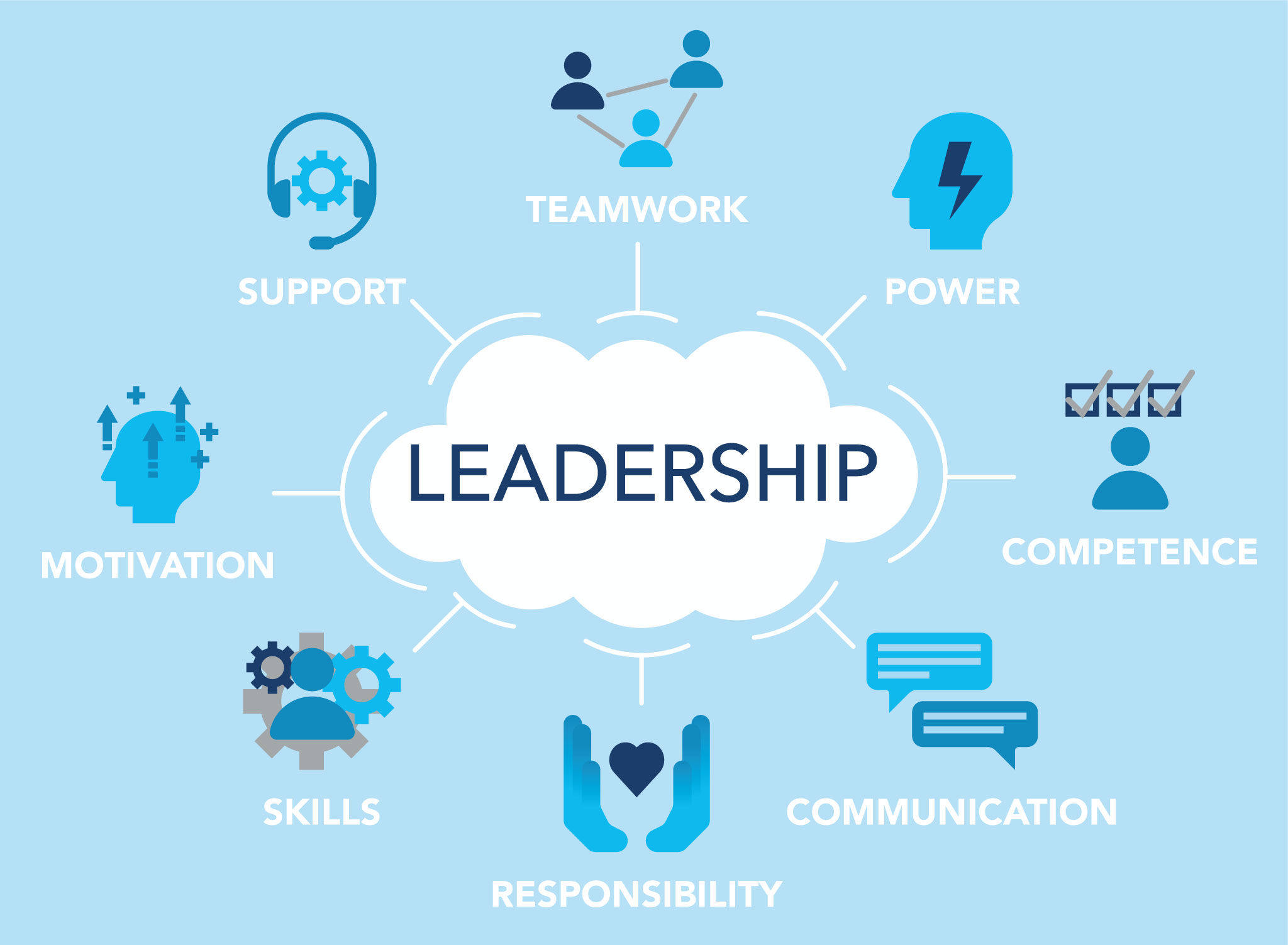
However, career advancement isn't solely about management roles. Employees can also grow by:
- Becoming experts in their field
- Tackling high-impact projects
- Gaining experience through cross-departmental moves
For instance, a company might implement a leadership development program featuring mentorship and training to help employees understand promotion criteria and develop skills suited to the organization. This encourages specialization and project leadership for those not pursuing management roles.
Enhancing Employee Growth with Cross-Functional Exposure
Cross-functional exposure is vital for broadening employees' experiences and perspectives, leading to career growth without necessarily stepping into management. One effective method is through cross-departmental moves, offering employees the chance to gain diverse experiences and fresh insights.
Temporary assignments or secondments to different departments or organizations are also valuable, as they help employees build:
- Leadership skills
- Specialized skills
Taking on leadership roles, such as mentoring juniors or leading teams, further develops leadership skills and increases employee visibility, aiding career progression. A company might encourage employees to take short-term assignments in other departments and lead cross-functional projects, promoting collaboration and exposing them to various parts of the business.
Implementing Performance-Based Advancement Plans
Creating structured leadership development programs with clear promotion guidelines based on milestones, employment length, and recommendations from mentors or senior managers is essential. Performance-based advancement plans inspire employees by offering:
- Targeted development opportunities
- Constructive feedback
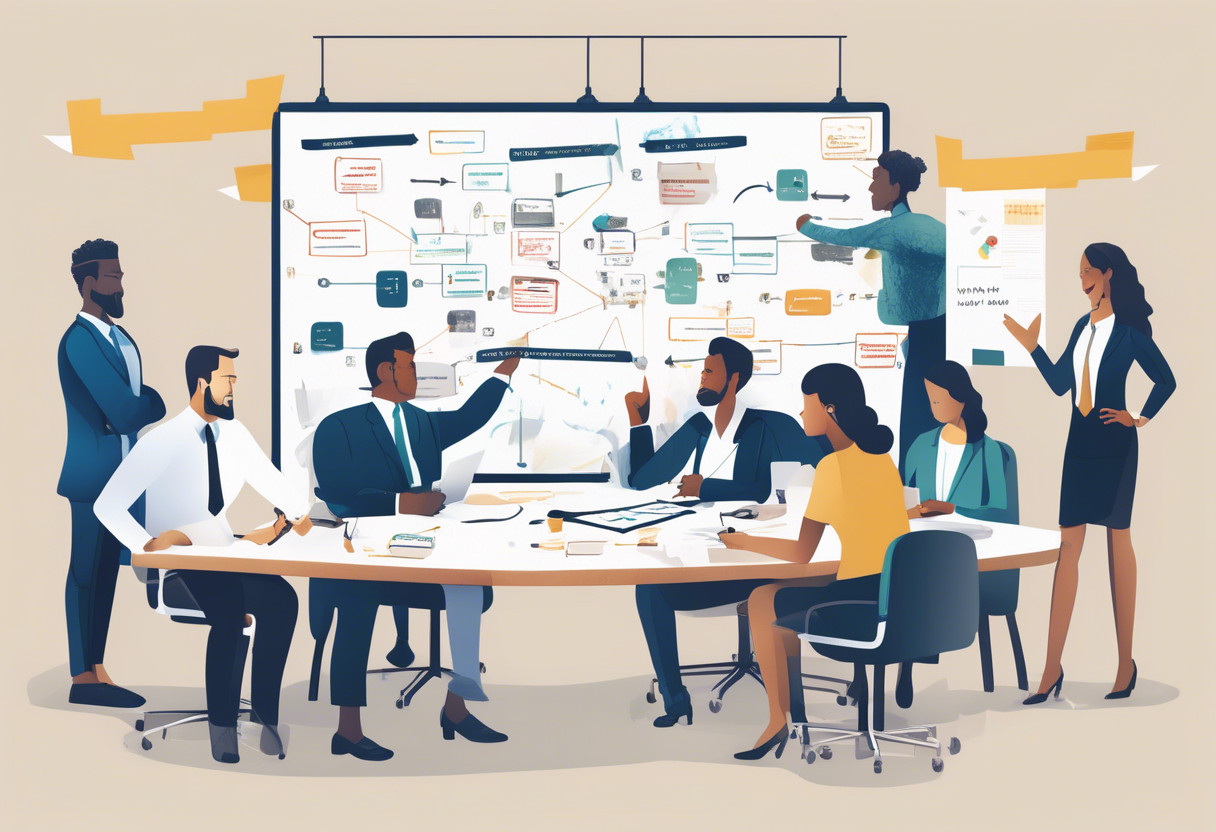
This approach helps employees understand their value and path to advancement. Mentorship and coaching play a crucial role in these plans, guiding employees, providing support, and fostering growth. A company might use performance metrics combined with mentorship feedback to craft personalized advancement plans, ensuring employees know the criteria for promotion and receive ongoing support to achieve those goals.
By blending leadership development with practical exposure and clear advancement criteria, companies can effectively support employee growth and career progression. This well-rounded approach not only prepares employees for future roles but also enhances their overall career path.
Continuous and Flexible Learning Environments
Online Learning Platforms for Employee Growth
Online learning platforms are essential for ongoing employee growth, offering flexible and accessible ways to develop skills. They allow employees to learn at their own pace, fitting it into their schedules and promoting a culture of continuous learning.
For example, platforms like Absorb Infuse integrate learning into daily tools, making it a seamless part of the workday. By weaving learning into workflows, it becomes a natural part of the routine.
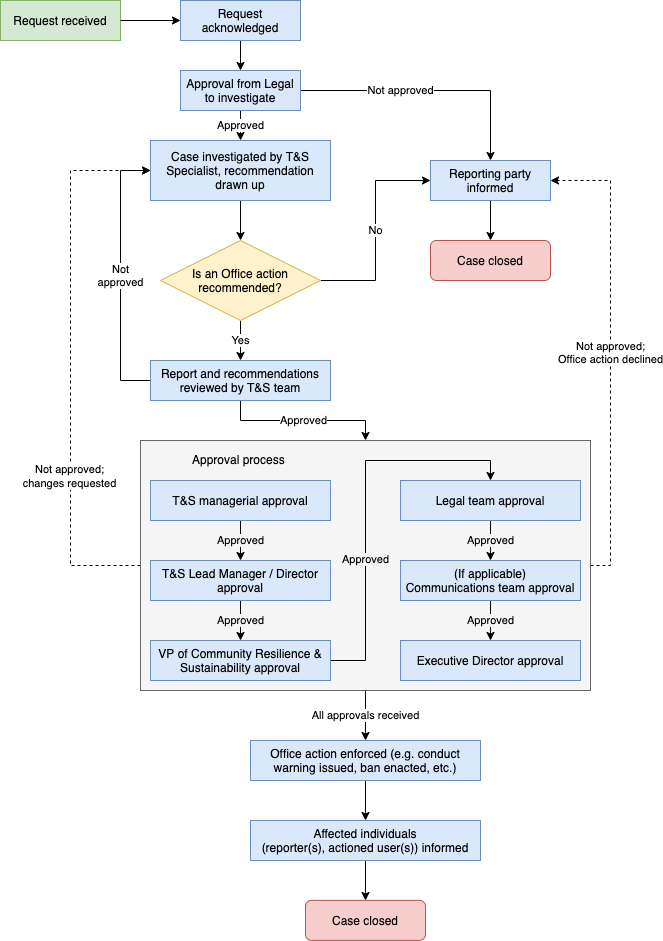
Moreover, hybrid learning setups that mix in-person workshops with online modules and virtual Q&A sessions offer dynamic and flexible learning experiences. These setups cater to diverse needs and locations, ensuring everyone receives consistent training.
Take TechStarters, for instance—they run a hybrid program with in-person cybersecurity workshops, online courses, and virtual Q&A sessions. This ensures all employees receive the same training, regardless of their location.
Microlearning and On-Demand Resources for Skill Growth
Microlearning and on-demand resources are excellent for addressing immediate learning needs, crucial for job performance and skill growth. This approach involves offering bite-sized training that employees can access as needed, making learning effective without being overwhelming.
Mobile learning apps enhance this by allowing employees to learn on the go, fitting learning into their busy schedules. These apps support continuous growth by providing quick, targeted courses during breaks, enabling employees to swiftly acquire skills for current projects.
Additionally, self-directed learning—such as research, reading, and experimenting—empowers employees to pursue knowledge and skills independently, aligning with their roles and career goals.
Embedding Learning into Daily Work for Employee Development
Embedding learning into daily work routines is vital for fostering a culture of continuous learning. By dedicating time in meetings for sharing ideas and building skills, organizations encourage constant improvement and make learning a natural part of work.
Open knowledge sharing through peer mentoring, lunch-and-learns, and team projects enhances employee growth and adaptability. An adaptable workforce is better equipped to solve problems, adopt new technologies, and contribute to the organization's growth and resilience in a fast-evolving world.
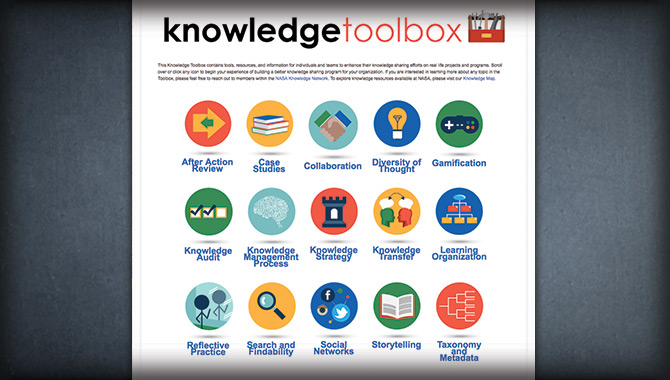
For instance, a company might allocate time in weekly meetings for employees to share new insights and learning experiences, embedding continuous learning into the team’s workflow. This approach not only supports individual growth but also drives overall organizational success.
By implementing these strategies, organizations can create ongoing and flexible learning environments that enhance employee growth, adaptability, and resilience—crucial for thriving in today’s fast-paced and ever-changing business landscape.
Alternative Growth Opportunities Beyond Promotions
Expanding Skills through Job Rotations for Employee Growth
Job rotations are a powerful tool for enhancing employee skill sets and fostering a deeper understanding of the company. By allowing employees to experience various roles or departments, organizations can uncover hidden talents and strengths. This approach enhances adaptability and problem-solving skills while providing employees with a comprehensive view of company operations. Employees who engage in job rotations often feel more equipped to tackle challenges and generate innovative ideas, having gained insights from different facets of the business. For instance, an employee might rotate through marketing, sales, and product development, acquiring a diverse skill set and a holistic understanding of the company.

Moreover, job rotations can lead to increased job satisfaction and engagement. When employees perceive opportunities for growth and learning, they are typically more motivated and committed, which can decrease turnover and foster a more dynamic workplace. By promoting job rotations, companies can cultivate a culture where continuous learning and development are prioritized, a crucial factor in today's fast-paced business environment.
Cross-Functional Projects for Employee Growth and Skill Development
Involving employees in cross-functional projects is another effective strategy for skill development and broadening perspectives. These projects unite individuals from different departments, igniting innovation and fostering a comprehensive understanding of the company's operations. Employees can learn from each other's expertise and approaches, resulting in creative solutions. For example, a team developing a new customer experience platform might include members from finance, IT, and customer service, enabling them to learn collaboratively.
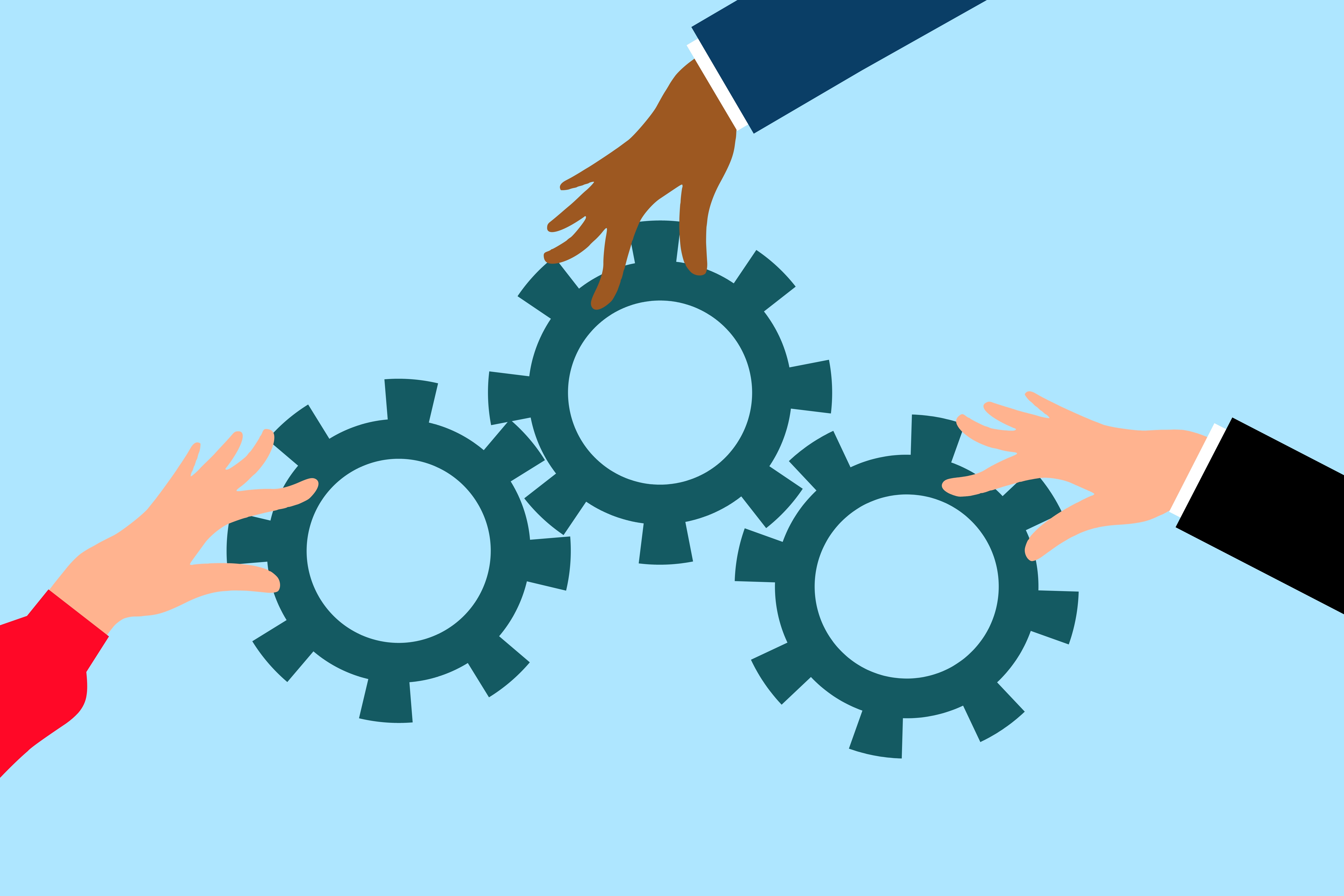
Participating in cross-functional teams also cultivates essential soft skills such as communication, teamwork, and leadership. These skills are invaluable in a world where collaboration with diverse teams is commonplace. Additionally, employees involved in these projects often gain visibility with leadership, potentially opening up opportunities for career advancement and development.
Certifications and Lifelong Learning for Employee Growth
Organizations can support employee growth by facilitating access to certifications and lifelong learning opportunities. Providing financial assistance or flexible schedules for certifications and advanced degrees can enhance an employee's value to the company. Access to online learning platforms and regular training sessions allows employees to update their skills at their own pace and according to their interests. For instance, an employee might participate in a certification program supported by the company’s tuition reimbursement policy while attending internal leadership workshops and online courses.
Implementing structured training plans that identify skill gaps and set learning objectives is a strategic approach to skill enhancement. This emphasis on learning benefits both the individual and the organization, maintaining competitiveness in a dynamic market. By investing in these initiatives, companies demonstrate a commitment to employee development, which enhances satisfaction and loyalty. This strategy not only benefits employees but also fortifies the organization’s overall success and resilience.
FAQ
How to Implement Personalized Growth Paths for Employee Growth
To make personalized growth paths work, they need to align with the company's objectives and key performance indicators (KPIs). This ensures that as employees grow, they also contribute to the company's goals.
Continuously gather data from various sources, such as employee feedback, performance metrics, and industry trends. This data helps in refining and updating growth paths to remain relevant. Companies can then adjust these paths to cater to both employee needs and company objectives.
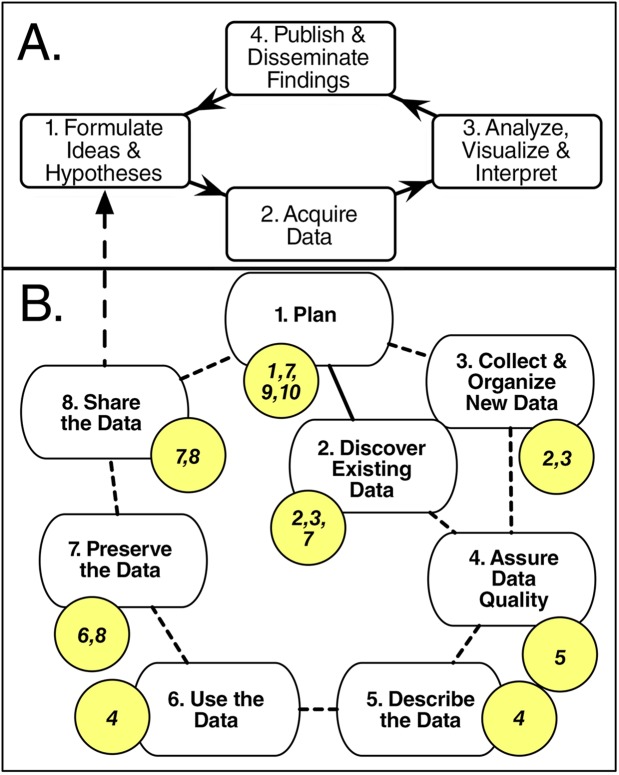
Planning ahead is crucial to maintain and evolve these paths, ensuring they remain effective. For example, leveraging data on employee performance and industry trends can help create personalized plans that are regularly updated to meet new skill demands and personal goals.
Benefits of Mentorship Programs for Employee Growth and Development
Mentorship programs are instrumental in supporting employee growth by involving experts who offer ongoing support and engagement. These programs facilitate knowledge transfer and guide employees on their career journeys, aligning with personalized growth.
Mentorship also enhances employee retention by fostering a supportive company culture and increasing job satisfaction. For instance, pairing junior staff with senior leaders can enhance skills and improve retention. Mentors provide tailored advice and feedback, assisting mentees in overcoming career hurdles and identifying growth opportunities.

This personalized attention can significantly boost an employee’s confidence and satisfaction at work, leading to longer retention. For mentors, teaching and guiding others strengthens their own skills and leadership, offering a sense of fulfillment.
Role of Cross-Functional Projects in Leadership and Employee Growth
Cross-functional projects are crucial for leadership development as they expose employees to diverse viewpoints and challenges, enhancing their problem-solving and communication skills—essential for leaders.
These projects encourage collaboration across departments, helping future leaders build networks and understand the business holistically. Participating in these projects allows employees to demonstrate initiative and flexibility, which are key leadership traits.
For example, leading a team from different departments to launch a new product provides valuable experience in coordination, decision-making, and managing stakeholders. Working in cross-functional teams challenges employees to think strategically and make decisions considering various perspectives and goals.
This not only improves problem-solving but also sparks innovative thinking. Employees learn to lead without formal authority by influencing and motivating team members through collaboration and shared goals. Cross-functional projects thus serve as a practical training ground for nurturing the next generation of leaders in a company.
| Section | Key Elements |
|---|---|
| Aligning Employee Goals with Company Objectives | Self-reflection, Development Plans, Regular Check-ins, HR Support |
| Leveraging HR Analytics for Employee Growth | Data Utilization, Progress Tracking |
| Mentorship and Coaching for Employee Growth | Implementing Effective Mentorship Programs, Enhancing Growth through Coaching, Evaluating Mentorship Impact |
| Leadership and Career Progression Opportunities | Preparing for Leadership Roles, Cross-Functional Exposure, Performance-Based Advancement Plans |
| Continuous and Flexible Learning Environments | Online Learning Platforms, Microlearning and On-Demand Resources, Embedding Learning into Daily Work |
| Alternative Growth Opportunities Beyond Promotions | Job Rotations, Cross-Functional Projects, Certifications and Lifelong Learning |